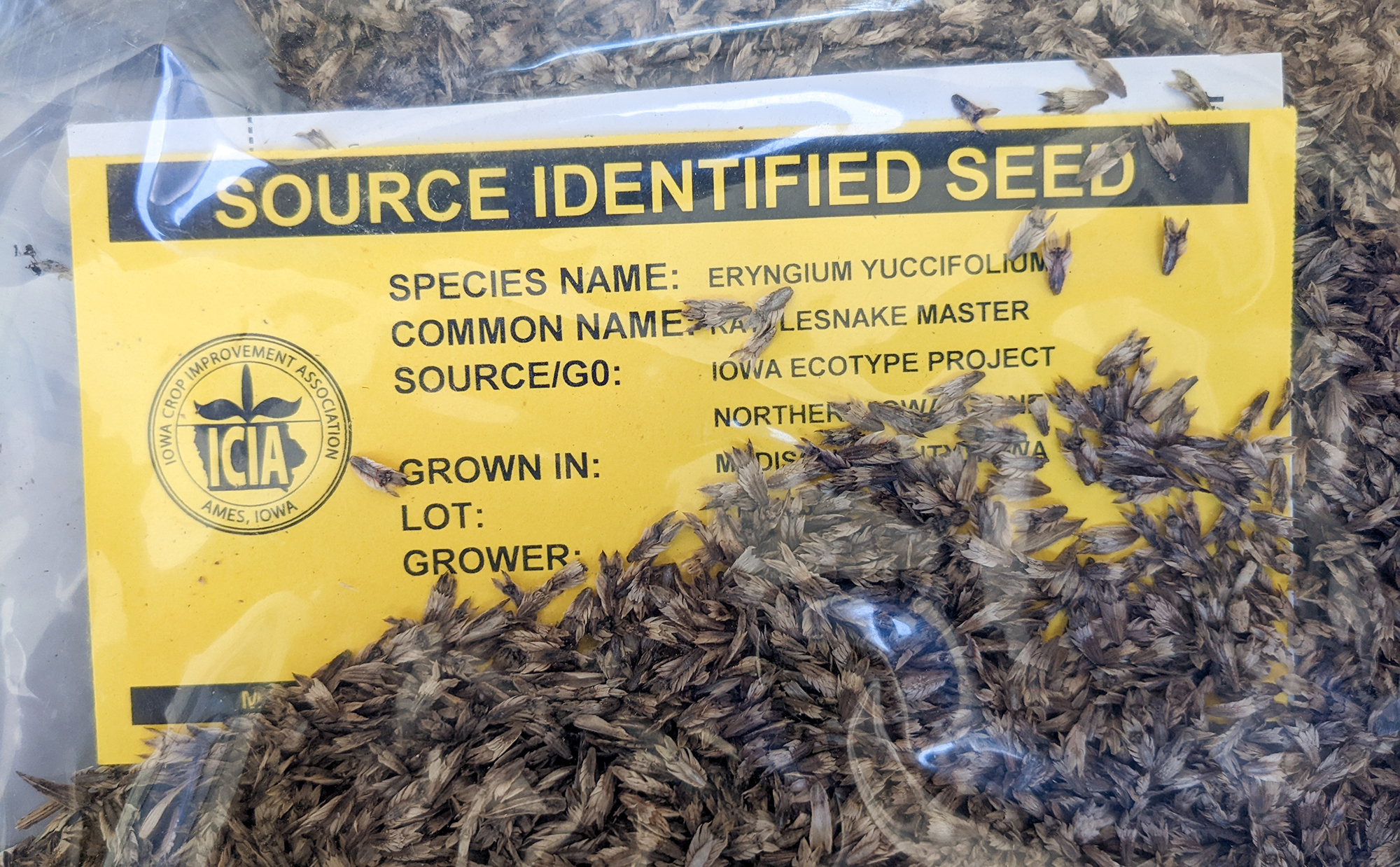Native Seed Categories
Native Seed Categories thompsbbUse seed adapted to local climate and growing conditions

Yellow Tag Seed
Iowa source-identified seed, distinguished by the yellow tag that marks it, is highly recommended for roadside plantings. The Iowa Crop Improvement Association certifies that this seed originates from Iowa prairies, which means it is adapted to Iowa climate and soil. This seed is often collected from multiple sites within a region of the state, giving it a broad genetic base and potentially making it adapted to a wide range of growing conditions. Buying yellow tag seed also reduces the risk of accidentally introducing new weeds to Iowa. Most of the seed provided through the Tallgrass Prairie Center is yellow tag seed.
Sources of yellow tag species and related information can be found in the Iowa Crop Improvement Association’s Iowa Seed Directory. Additional native seed sources and information can be found on the Tallgrass Prairie Center’s Iowa Prairie Seed and Service Providers page.
Local Ecotype
Local ecotype seed originating from Iowa or nearby that is not yellow tag certified is also appropriate for roadside plantings. Counties or cities can obtain this seed by requesting it from vendors. Some counties establish their own local ecotype prairie grass and wildflower production plots with seed collected from prairie remnants within their county or region. Ideally, this seed will be cleaned and tested to know how much live seed (the percentage of a seed lot that is viable and able to germinate into a seedling) is actually being planted.
Cultivars
Cultivars or cultivated seed varieties are generally not recommended. Cultivars are often derived from regions too far south and west of Iowa, making them adapted to a different climate and growing season. Most are only available in a limited variety of species, are developed for forage production, and can be too aggressive in diverse plantings.